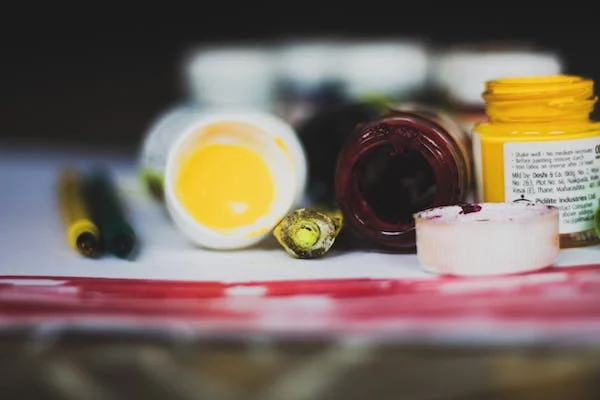food paint Adding Color and Creativity to Culinary Delights

Food paint has become an increasingly popular tool in the culinary world, allowing chefs and home bakers alike to add vibrant colors and intricate designs to their creations. Whether you’re decorating a cake for a special occasion or adding artistic flair to cookies, food paint offers endless possibilities for food paint creativity. In this article, we’ll explore everything you need to know about food paint, from its types and ingredients to how to use it effectively.
Introduction to Food Paint
is a type of edible coloring used to decorate items. It is specially formulated to be safe for consumption while providing vibrant colors and a smooth finish. The primary purpose of is to enhance the visual appeal of dishes, making them more attractive and enticing to eat. In the culinary arts, presentation is key, and food paint allows chefs to transform ordinary dishes into works of art.
Types of Food Paint
There are two main types edible and non-toxic . Edible food paint is made from ingredients that are safe for consumption, such as food coloring and natural pigments. Non-toxic on the other hand, may not be intended for ingestion but is still safe for use on surfaces. Both types come in a variety of colors and finishes, allowing for endless creative possibilities.
Ingredients Used in Food Paint
typically contains a combination of ingredients, including food-grade colorants, binders, and preservatives. Common colorants include natural pigments like beetroot powder, turmeric, and spirulina, as well as synthetic food dyes. Binders such as cornstarch or gelatin help the adhere to surfaces, while preservatives ensure its shelf stability.
How to Make Food Paint at Home
Making at home is a fun and cost-effective way to customize your creations. There are numerous DIY recipes available online, using ingredients commonly found in your kitchen pantry. However, it’s essential to follow safety guidelines and use only food-safe ingredients to avoid any potential health risks. Additionally, be sure to label homemade properly, especially if you’re giving it as a gift or selling decorated items.
Applications of Food Paint
can be used in various culinary applications, including cake decoration, cookie decorating, and edible art. Whether you’re painting intricate designs on fondant or adding splashes of color to sugar cookies, offers unparalleled versatility and precision. With practice and creativity, you can use to elevate your baked goods to the next level.
Tips for Using Food Paint
When using it’s essential to use proper techniques to achieve the desired results. Start by practicing on a small piece of parchment paper or fondant to get a feel for the consistency and food paint brush strokes. Use soft-bristled brushes for delicate details and larger brushes for broader strokes. Additionally, store food painted items in a cool, dry place away from direct sunlight to prevent colors from fading or bleeding.
Safety Considerations
While generally safe for consumption, it’s essential to consider any allergies or dietary restrictions when using it. Be sure to read the ingredients list carefully and avoid any known allergens. If you’re serving decorated items to guests, it’s a good idea to label them with a list of ingredients to ensure everyone can enjoy them safely.
Food Paint Trends
In recent years, has gained popularity thanks to social media platforms like Instagram and Pinterest, where users share photos of their beautifully decorated creations. From watercolor cakes to hand-painted macarons, there’s no shortage of inspiration for aspiring bakers and decorators. Popular trends include metallic finishes, marbled effects, and intricate floral designs.
Commercial Food Paint Brands
If you’re not the DIY type, there are plenty of commercial brands available on the market. These products come in a wide range of colors and finishes and are specially formulated for use on food surfaces. Before purchasing, be sure to read reviews and recommendations to find the best product for your needs.
Conclusion
is a versatile and fun tool for adding color and creativity to culinary creations. Whether you’re a professional chef or a home baker, incorporating into your repertoire can take your dishes to the next level. With its endless possibilities for customization and artistic expression, is sure to become a staple in any kitchen.



